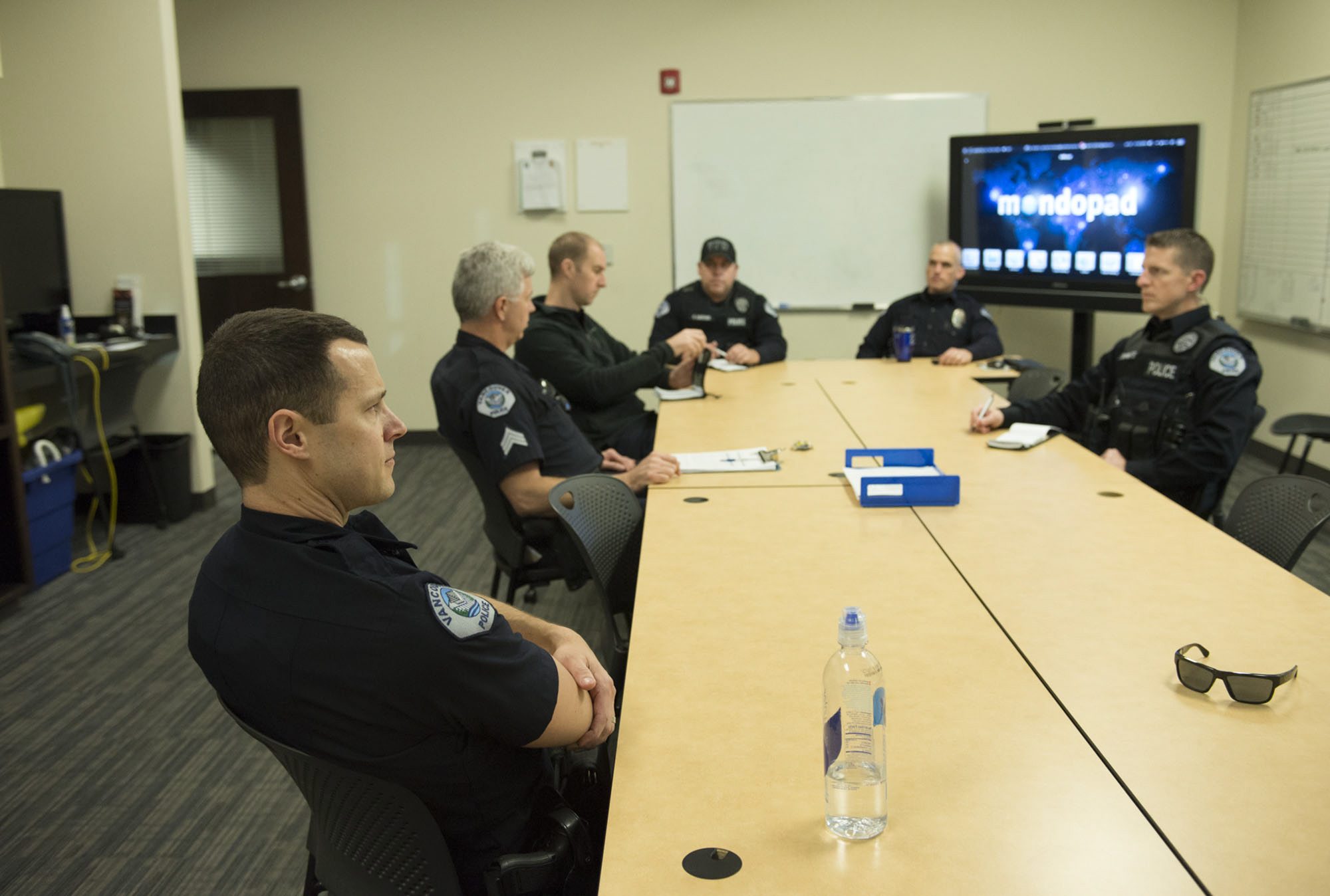Vancouver Police Department Chief James McElvain says the city needs to hire 42 more police officers and 19 more civilian staff over the next five years to fill the community’s service gaps in traffic enforcement, property crime investigations and crime data analysis.
“It is a large leap, but we’re also digging out of a hole that we have found ourselves in,” McElvain told the city council Monday during his presentation about the police department. “It is time to reinvest in our community.”
The department has 190 sworn officers to serve the city’s roughly 167,000 residents. Of the department’s $36.8 million budget in 2015, $26.2 million, or 71 percent, went to police staffing, according to the chief’s report.
Hiring 42 more officers (including six officers recently authorized to be hired using the city’s marijuana excise tax revenue) at an annual cost of roughly $100,000 per officer, including benefits, would cost the city about $4.2 million per year. The new civilian staff would cost about $1.3 million per year. Add in the equipment, technology and cars to outfit the additional personnel, and the total cost of the chief’s request rises to about $6.2 million, according to City Manager Eric Holmes.
McElvain proposed setting up a community resource team made up of members of the city council and the public to set priorities, determine the level of resources needed and find a way to fund the package, similar to the city’s process last year for solving its long-term street-funding problem.
Among the key problems McElvain cited were:
• Traffic laws not being enforced, resulting in increasing collisions and severity. (In 2006, Vancouver police made 40,642 traffic stops. Last year, officers made about 2,000 traffic stops. Pedestrian-involved collisions are rising.)
• Escalating property crimes and lack of investigative follow-up by police.
• Limited ability to identify crime trends and suspects due to lack of crime analysis.
• Problems meeting minimum staffing leading to burned-out officers who are required to backfill shifts; the department is overspending on overtime.
• Decreased ability to build trust with the public due to a reduction in community outreach since the Great Recession.
• Officers aren’t meeting training standards for safety, risk and liability, and the department is relying on grants to fund training.
“We’ve been forced to do more with less. This is not possible. We do less with less,” McElvain said.
The department needs to reverse the path it’s on so it can address the community’s concerns, he said. Adding roughly eight officers each year for the next five years would enable the department to beef up staffing in property crimes, traffic safety, intelligence, patrol, the bike team and specialty investigation teams such as the drug task force.
“Establishing a course today will ensure we are well-prepared to meet the demand in coming years,” McElvain said. “The longer we wait, the greater the challenge to catch up.”
The city’s crime rate remained flat for 2014-15, according to Vancouver police, which tracks crime statistics using the National Incident Based Reporting System rather than the Uniform Crime Report Index that the FBI uses. Last year, the violent crime rate was 10.1 incidents per 1,000 people, down from 11.9 incidents per 1,000 in 2014. The property crime rate was 51.6 incidents per 1,000 last year, up a hair from 51.5 incidents per 1,000 in 2014.
Mayor Tim Leavitt asked McElvain whether adding more officers would have a significant impact in crime prevention.
McElvain replied that he didn’t think any police chief would say, “give me more resources and I’ll give you less crime.” However, he said, the department could be more proactive. For example, it could check the criminal histories of people who pawn items at pawn shops to see if they’re linked to crimes, he said.
McElvain said if the city ramped up its police force and resources, it could initially expect crime to rise because more crime would be reported as the public realized police were getting results. Then crime would fall, he said.
Leavitt wondered why McElvain was so quick to dismiss the idea of using photo-enforcement technology for traffic safety, such as red-light cameras and speed cameras. He said he wanted to know how things work with other cities in Washington that use such technology.
The city council seemed generally supportive of the proposal to increase police resources.
“Your force has done an amazing job,” Councilor Jack Burkman said. “I don’t disagree that there’s a need. I don’t know how we’re going to meet the need, but it’s a conversation we need to have.”
Leavitt said the council would discuss it during its upcoming retreat.
“I think this council is committed to helping the Vancouver Police Department fill the gaps that you’ve identified,” Leavitt said.




